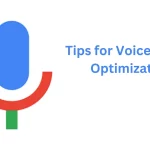As digital search continues evolving, people are increasingly turning to platforms that provide direct answers, like voice-activated assistants (Google Assistant, Siri, Alexa) and Q&A sites (Quora, Reddit). These platforms allow users to ask questions conversationally and expect precise answers. This shift has given rise to a concept known as Ask Engine Optimization (AEO), which is the process of creating content optimized for answer-focused platforms, aiming to provide clear and relevant answers directly.
Here’s a comprehensive look into AEO, its importance, and practical steps to effectively implement AEO strategies.
What Is Ask Engine Optimization (AEO)?
AEO, or Ask Engine Optimization, is about tailoring your content specifically to answer questions users frequently ask on search engines, voice assistants, and Q&A platforms. Unlike traditional SEO (Search Engine Optimization), which often emphasizes keywords and site ranking, AEO focuses on delivering concise, accurate answers to questions and presenting content in a way that search engines can quickly feature it in answer boxes or voice responses.
Why AEO Matters
- Rise of Voice Search: With the increasing use of voice search on mobile devices and smart speakers, users are now phrasing searches more conversationally. AEO ensures that content is easily accessible and optimized for voice response.
- Google’s Featured Snippets: Google’s answer boxes (featured snippets) are often the first result shown. AEO helps your content land in these snippets, increasing visibility and engagement.
- Shift to Conversational Queries: Users today phrase searches as questions rather than keywords. For example, instead of searching “best laptop,” users may ask, “What is the best laptop for a college student?” AEO positions your content to respond effectively to these natural language queries.
Key Strategies to Implement Ask Engine Optimization
1. Understand User Intent and Common Questions
- Research Long-Tail Keywords: Long-tail keywords are often question-based and conversational. Use tools like AnswerThePublic, Google’s People Also Ask, or Quora to find common questions around your topic.
- Consider Voice Search Intent: Voice search questions are often longer and include words like “what,” “who,” “how,” and “why.” Identify common queries that users may ask aloud to optimize your content accordingly.
2. Use Structured Data and Schema Markup
Structured data or schema markup is a set of code that helps search engines understand your content better. By applying schema to content, you increase the chances of being featured in snippets.
- Add FAQ and How-To Schemas: FAQ schema tells search engines that you’re directly answering questions, while How-To schema is useful for instructional content. Both increase visibility on search engine results pages (SERPs) and enhance the chances of landing in answer boxes.
- Optimize for Rich Snippets: Use specific formatting, like numbered lists or bullet points, which makes content easily scannable and ready for search engines to pull directly as snippets.
3. Craft Content to Be Concise, Relevant, and Engaging
AEO-optimized content should be short, clear, and accurate so search engines can deliver responses effectively, especially in voice searches, where brevity is key.
- Directly Answer in the First Paragraph: Start with a brief, clear answer to the primary question, then go into more detail. This method works well with both search engines and voice assistants, which prioritize direct answers.
- Keep Sentences Short and Simple: Use conversational, easy-to-understand language. This helps voice assistants read out answers clearly and makes content more accessible.
4. Focus on Quality Content with a Q&A Structure
The Q&A format is ideal for AEO because it’s designed to answer specific queries directly.
- Create FAQs for Each Page: Add frequently asked questions (FAQs) at the bottom of blog posts, product pages, or landing pages to increase the chances of appearing in answer boxes.
- Use Headings for Commonly Asked Questions: Structure articles with subheadings that directly ask questions (e.g., “How does AEO help my business?”). This layout helps search engines identify sections of content relevant to specific questions.
5. Optimize Content for Voice Search
Voice search optimizations overlap significantly with AEO strategies. Here’s how to enhance your content for voice-driven queries:
- Answer in Conversational Language: Voice queries are usually conversational. Use a natural, engaging tone and avoid industry jargon when possible.
- Focus on Local Queries: Many voice searches are location-based (e.g., “Where is the nearest coffee shop?”). If relevant, include localized content, as well as phrases like “near me,” to capture nearby searches.
- Optimize for Featured Snippets: Creating content that directly answers questions in a snippet-friendly way (bullet points, lists, short paragraphs) helps voice assistants pull answers more accurately.
6. Engage with Q&A Platforms
Participating on platforms like Quora, Reddit, and Stack Exchange can increase visibility and drive traffic back to your site. These platforms allow you to showcase expertise while directly engaging with an audience looking for answers.
- Answer Common Questions with Value: Provide in-depth, thoughtful answers to popular questions. Link back to your website’s relevant pages when appropriate.
- Use Keywords in Your Answers: This improves the chances of your answers being found by people searching for similar information on Google or other engines.
7. Leverage Analytics to Refine AEO Strategy
Like SEO, AEO should be continuously optimized based on data and user feedback.
- Monitor Voice Search Data: Some analytics tools allow you to track which voice search queries are leading to your site. These insights help you adapt your content to better match what users are asking.
- Check ‘People Also Ask’ and Related Searches: Google’s “People Also Ask” section gives insights into related questions users have, which can inform additional content ideas or optimizations.
Also Read
Benefits of Ask Engine Optimization
- Increased Visibility on Search Engines: Optimizing for AEO helps your content get featured in rich snippets and answer boxes, making it one of the first things users see.
- Improved User Engagement: Providing direct, relevant answers keeps users engaged, reducing bounce rates and encouraging further interaction with your site.
- Voice Search Readiness: AEO naturally aligns your content with voice search queries, which are increasingly popular, especially on mobile devices.
- Higher Traffic from Q&A Sites: Active participation on Q&A platforms helps direct traffic back to your site, boosting credibility and broadening your reach.
- Enhanced Authority and Trustworthiness: When your content consistently answers questions effectively, users and search engines alike view your site as a reliable source of information.
Conclusion
Ask Engine Optimization (AEO) represents an evolution in search strategy, focusing on answering users’ questions accurately and directly. As people increasingly seek instant, voice-based answers, AEO is essential for any content strategy. By understanding user intent, applying structured data, optimizing for voice search, and engaging with Q&A platforms, you can elevate your content’s reach and relevance. As you implement AEO strategies, keep refining your content based on analytics and user behavior. The key to effective AEO is staying responsive to how people ask questions today—and how they might ask them tomorrow.





